
I was chatting to Diego, my Spanish running partner, about off-road running alternatives. Our conversation halted when I mentioned Fell Running. Thanks to his limited English he misunderstood and just about collapsed to the floor in laughter. He wanted to know if it was like trail running but with the objective to trip and fall as often as possible. Not quite. So I set about researching the subtle differences for Diego.
What’s the difference between fell running and trail running? The difference between trail running and fell running is the terrain. Trail running is along specifically marked trails. Fell running involves a series of checkpoints usually at the top of hills. Runners have complete freedom of their route between checkpoints.
To the casual non-runner looking on from the couch trail running and fell running look like more or less the same thing. This is the same as looking at photos of sunrise and sunset and saying that they look more or less the same. While they may look similar to a casual glance, the truth is that they are vastly different.
All About Terrain
While there is a degree of overlap between trail running and fell running for the opening mile or two of an event, the differences become very clear as soon as you hit the first hill.
Trail running will continue on a pre-selected and well-marked trail, usually a hiking or mountain bike trail. Fell running, on the other hand, will have a checkpoint at the top of the hill and you find your own way to the top over terrain usually devoid of any paths.
The hills in fell running are often covered in thick mist so a map and compass are needed to navigate between hilltop checkpoints.
Almost always trail running events will cover longer distances than fell running events. The super technical terrain of fell running make it next to impossible to manage an event anywhere near the distances of ultra trail running events.

What is a Fell?
Originally the word fell was used for describing a wide landscape feature devoid of trees and large shrubs such as a mountain range or moor-covered hills.
The word fell itself is derived from the Old Norse word
Common usage was subsequently refined to refer to the heather covered hills of Northern England, the Isle of Man, and Scotland.
Which Came First Trail Running or Fell Running?
Trail running has its origins in the USA. The idea came from a group of runners chatting in a bar. It is amazing the number of hair-brained sporting ideas was started by a group of guys chatting in a bar. The concept of the Ironman triathlon originated in a bar in O’ahu where there was a debate whether swimmers, cyclists or runners were the most fit.
Getting back to trail running though. A group of runners from San Francisco were sitting in a bar in Mill Valley. The Dipsea Inn had just opened for business at Stinson Beach. Between them and the Dipsea Inn were the trails of Mount Tamalpais.
So the runners made a bet, as runners sitting in a bar tend to do. The official version states that it was a bet to see who could run to the Dipsea Inn the fastest. I suspect that it was combined with the runner finishing in the last place paying for drinks as well.
As a result on 19 November 1905 the wonderful sport of trail running was born with the first edition of what went on to become The Dipsea Race. The Dipsea race is the second oldest surviving event in the USA after the Boston Marathon that started in 1897.
Fell running, on the other hand, owes its roots to King Malcolm Canmore who needed a new swift messenger. A race was organized in Braemar, Scotland, in 1040. Later it would become a key event in the Braemar Gathering that evolved into the Highland Games Gathering. To this day the Highland Games Gathering takes place in Braemar on the first Saturday in September.
In England the oldest surviving fell run is part of the Grasmere Sports Meeting held in the Lake District every August.
So, fell running predates trail running by a mere 865 years.

Different Types of Hard
When it comes to trail running it is the sheer distance that makes most events so hard. A hundred miles has become an event standard for ultra trail races across the USA.
When you add the 10.000+ feet of elevation at events like the Leadville 100 you get that magic combination of both legs and lungs burning. In Europe, the Ultra-Trail du Mont-Blanc at 106 miles carries the lung-busting crown.
The toughest trail event in the USA in terms of failure rate is the infamous Barkley Marathons. It is run in five laps of theoretically twenty miles each before taking elevation changes into account. In reality, each lap is closer to 26 miles, in other words, a marathon.
At first glance, the sixty-hour cut off time of the Barkley Marathons seems generous. The reality is somewhat different. The first edition of the Barkley Marathons was in 1986. It wasn’t until 1995 that a runner beat the cut off for the first time. In fact, in the first 32 editions, only 15 runners had beat the cut off, and only two of those had done so more than once.
Fell running doesn’t have close to the same type of distances. Even the fabled Bob Graham Round in the English Lake District that traverses forty-two Lakeland fells within 24 hours is only a distance of 66 miles.
Just because fell runs are much shorter does not in any way make them easier.
Fell runs do not traditionally follow any path. That in itself makes progress a lot slower. For starters, you need to pick your own line that zigzags between clumps of knee-length heather. Add to that the going underfoot will be muddy to the point of marginal traction. There is also no way that you can follow the line of the runner just in front of you as they will have churned up the mud into a sloppy slush.
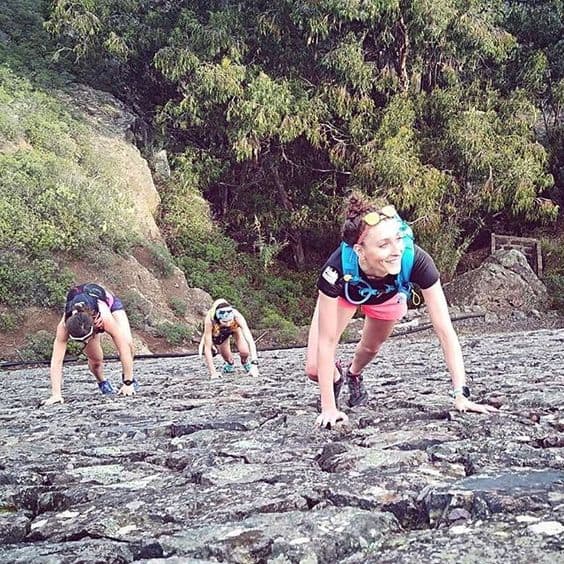
Production Cost
Large trail running events require massive and detailed infrastructure. To start with there are routes of a hundred miles or more that need detailed route markings. These route markings need to be cleared together with a full trash sweep after the event.
Long events mean that athletes burn an insane amount of calories. This creates the need for regular and very well stocked aid stations. Those aid stations need fully stocked first aid services as well as standby ambulances.
Out on the route on race day, you will need hundreds of volunteers that need to be fed and supplied with water. Every foot of the trail needs to be covered by two-way radio communication so that rapid medical evacuations can take place if needed. The larger the field of runners the more the support infrastructure will balloon.
By comparison, fell running requires volunteers at the athlete checkpoints, nothing more. Runners are required to be completely self-sufficient in terms of hydration, nutrition and whatever other needs that they may have. In certain fell running events athletes are permitted to receive aid from their own support crew at certain pre-indicated points along the route.
These factors within the world of fell running moves most of the responsibilities relating to athlete comfort and safety from the organizer to the athlete.
Popularity
Thanks to a massive marketing drive from shoe and clothing companies trail running has become massively popular. At the moment worldwide there are 20.000 trail running events and an active trail running population of 20 million regular runners.
When you combine such a large population of trail runners with the sensitive environment that most events pass through it is understandable that the big iconic events have a qualifying system and an entry limit.
For instance, the classic Western States 100 has a complex qualifying system. Of those athletes that qualify, a maximum of 5.000 athletes
Across in Europe is the granddaddy of trail events. The Ultra-Trail du Mont-Blanc or UTMB as it has been branded started as a single event of 106 miles in 2003. The organizers were expecting 300 runners in the first year and they had 711 on the start line. Within three years entries had ballooned to 3.000 on a trail that could handle a maximum of 2.500 runners.
The UTMB organizers chose a strategy of adding new events at different distances to accommodate the overflow. The UTMB remains the top tier flagship event but is now supported by three second-tier ultramarathons, two events shorter than the marathon distance and a single team mountaineering event. In 2018 a total of 8079 runners started the four ultra-distance events.
By comparison fell running events are only found in the North West of England, parts of Scotland and the Isle of Man. This geographic restriction immediately limits the scope of popularity that fell running can possibly enjoy on a global scale. Even at a local UK level fell running has been usurped by the younger upstart of trail running.
A prime example of this is two events that took place on the same day in England’s Lake D
The trail race was well organized with way markers, marshals, and an aid station along the way. The fell race had a single checkpoint at the top of the Glaramara with runners finding their own way up and down.
In spite of having an entry fee that was 90% cheaper the fell race attracted 30 runners compared to the 500 that lined up for the trail race.
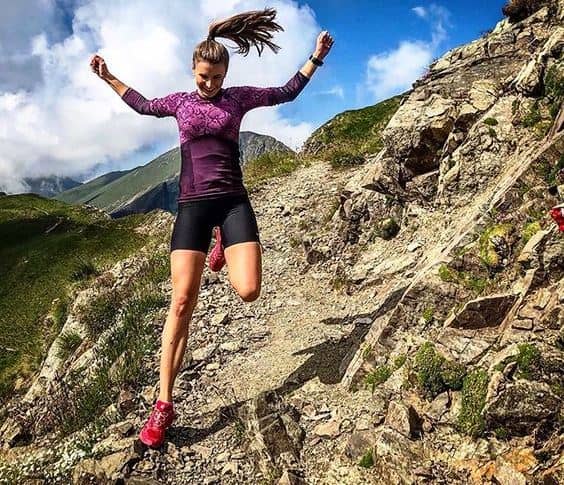
Relative Danger
The biggest objective danger that I have seen in trail races and ultra trail races can be distilled down into hydration and nutrition management. Start getting those wrong and your concentration and coordination will start to waver.
That does not mean that it is not possible to face plant on wide trails when you are fully hydrated and fueled. I should know. I did exactly that, going uphill, tripping over just about the only really prominent rock protruding from the trail. An awkward landing on another rock had me nurturing a rib fracture for eight weeks.
Fell running takes the risk factor and cranks it up to a whole other level.
Descents in fell running races are generally split into only two categories. Those are smooth and rough. A rough descent is one that involves leaping down treacherous drops from loose rocky outcrops four feet tall or higher down onto super sketchy steep, loose, and rocky landings.
In other words, the kind of descent where a single misplaced step can spell a bruising fall if you are super lucky, or a broken leg, or a lot, lot worse.
Add to this the mountains of North-West England, Scotland and the Isle of Man are not known for having the most stable of weather. Conditions can change in a matter of minutes, even during the height of summer. Imagine those same rough descents I mentioned earlier when enveloped in thick fog with visibility reduced down to a mere four feet.
It is well known in mountaineering that mountain systems can create their own microclimates, and mountaineers need to prepare for all eventualities irrespective of the season. I remember Ricky Lightfoot explaining what happened one year during the Three Peaks race in Yorkshire. The weather was boiling hot at the start line. They crossed the first peak in a swirling snowstorm, had a hailstorm just before the second summit and 60mph wind gusts on the third.
It is also vital that fell runners carry emergency supplied so that if they do have a bad fall they are able to layer themselves and have some degree of protection from the elements until help arrives. Because fell descents have no specific route, rescuers will have only a vague idea of where a missing runner might be.
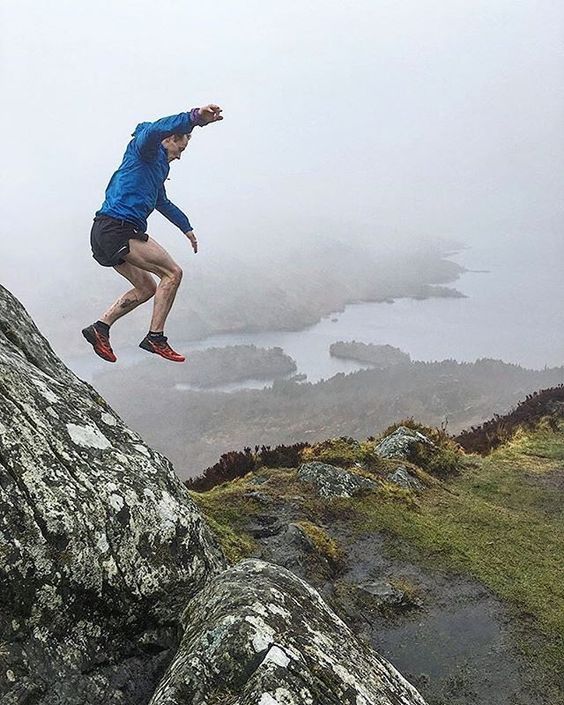
Navigation
Fell running requires mountain navigation skills at a much higher level than trail running.
When trail running you are following a trail or system of trails. Sure, you need to know which trail option to take when two or more trails intersect. Beyond this, there is very little complexity to trail run navigation.
During trail running races the navigation becomes even simpler. Trail races have both way markers and volunteers to help steer runners along the correct path. The onus is, however, on the shoulders of the runner to ensure that they are on the right route.
Where trail running resembles hiking on hiking trails from a navigation perspective, fell running more closely resembles mountaineering.
Fell running has no trails or even waymarkers at races. Your aim is to reach the summits of a selected series of hills in a specific order. This is where using your compass and map is vital. Once you are down in a valley you need to know which break out of that valley will get you to the correct ridgeline to your desired summit.
This is especially true at races where even during good weather you will only likely get a visual reference on your next checkpoint when passing over the summit of the preceding hill. Bearing in mind that we are referring to the UK where stable, good weather is unlikely to last for an extended period of time.
When conditions deteriorate to their normal foggy, rainy and even snowy conditions it becomes vital to be able to read your map and get a compass bearing on the summit and checkpoint that you are trying to reach. The last thing that you will want is to struggle all the way to to the summit of the wrong hill.
Another one of Ricky Lightfoot’s famous stories involves an out and back fell race to a single, solitary summit checkpoint, in
Fifty yards from the summit of the hill he emerged above the clouds to see the checkpoint at the summit half a mile away. He could also see his competitors passing through the checkpoint that just happened to be on a completely different hill.
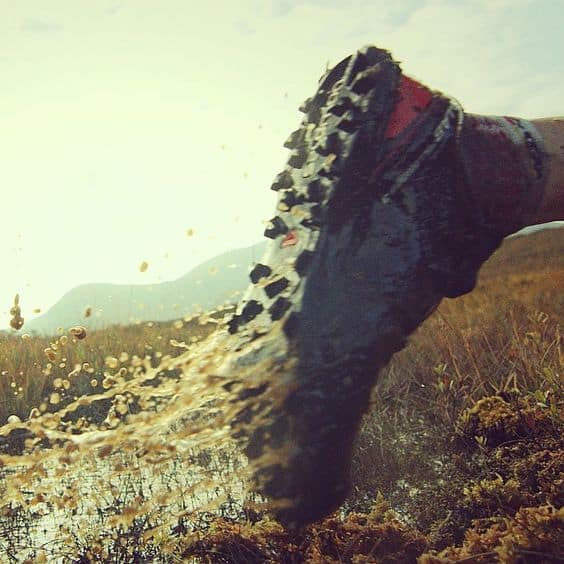
Are You a Trail or Fell Runner?
In all likelihood whether you are a trail runner or a fell runner will be determined by where you live. Unless you live in the North-West of England, Scotland or on the Isle of Man you will be by default a trail runner.
That does not mean that if you find yourself somewhere where you have the chance to do a fell run that you can’t do it. You have trail runners who run fells and you have fell runners who run trails.
One classic example of the crossover from
The best example that I can think of for crossover from fell to trail running is Jasmin Paris. She holds the women’s record for the Bob Graham round. In 2016 she finished sixth at the UTMB, her first attempt at an ultra trail event.
To me, it is less important whether you are labeled a fell runner or a trail runner. Just getting out into nature and enjoying your running in the best way you can is a win in my eyes.
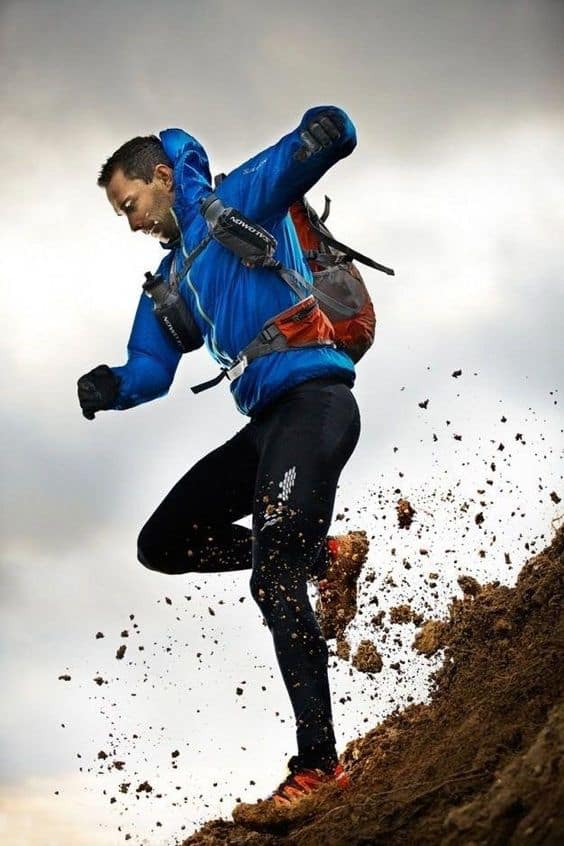
Related Questions
Can I wear my trail shoes for fell running? If your trail shoes are the type with bigger lugs for muddy trails, they will be perfect for fell running. Better to wear older shoes than shiny clean new shoes for the squelching mud and peat bogs.
How to transition from trail running to fell running? To start getting a feel for fell running,
